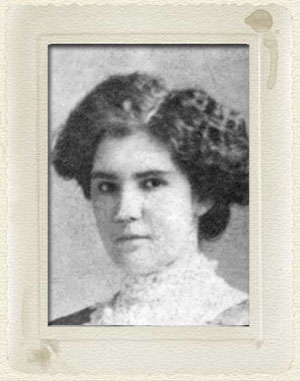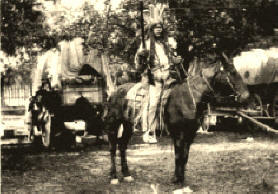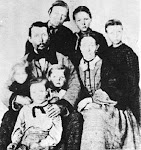2.04.2010
(49) Zemira and The Black Hawk War
Photo from http://www.blackhawkproductions.com/.
This website is a well-designed and objective history of this war.
The Black Hawk Indian War, which began in 1865, was the longest and most destructive conflict between pioneer immigrants and Native Americans– or Indians– in Utah History.75
Zemira and his family moved to Southern Utah in the winter of 1864-65. There are interesting stories about Indian trouble on the Upper Muddy where Zemira then lived, though he didn’t mention them in his writings. The pioneer settlers in and around St. George were very much troubled by the Indians during the Black Hawk War, some people being killed, and many animals stolen.76 Zemira lost some of his animals by their being stolen though he doesn’t mention Indians as being the thieves.
Because of the extensive impact this war had on the Mormon settlements, a brief summary of that war is given here:
Black Hawk was not actually a chief, but was a courageous young Ute brave. He succeeded in uniting factions of the Ute, Paiute, and Navajo tribes into a very loose confederacy bent on plundering Mormons throughout the territory. Cattle were the main objectives of Black Hawk’s offensives but travelers, herdsmen, and settlers were massacred when it was convenient. Black Hawk and other Utes then would escape to the mountains with hundreds of stolen cattle. Naturally, scores of hungry Indian warriors and their families flocked to eat “Mormon beef” and to support Black Hawk, who was suddenly hailed as a war chief.
The years 1865 to 1867 were by far the most intense of the conflict. Latter-day Saints considered themselves in a state of open warfare. They built scores of forts and they deserted dozens of settlements, while hundreds of Mormon militiamen chased their illusive adversaries through the wilderness with little success.
(Even as late as 1874, at which time Zemira was called as the presiding elder to go to Springdale, 44 miles east of St. George, there were only 6 or 7 families still living there. All the rest had left their homes and farms because of the Indian dangers during the Black Hawk War, and had never returned.)
Actually this war erupted as a result of the pressures white expansion brought to the Indians –or Native American- populations, so the Indians weren’t entirely to blame for the trouble. The white people’s settlements altered Indian ecosystems, destroyed their subsistence patterns by encroaching on their fishing and hunting grounds and their other food source areas, which caused starvation. Those who did not starve often succumbed to European diseases.
In the fall of 1867 Black Hawk made peace with the Mormons. Without his leadership the Indian forces, which never operated as a combined front, fragmented even further. The war’s intensity decreased and a treaty of peace was signed in 1868. Intermittent raiding and killing, however, continued until 1872 when 200 federal troops were finally ordered to step in.77
75- Utah History to Go. Black Hawk War - John A. Peterson, Utah Hist. Encyclopedia
76- A. Karl Larson, - Erastus Snow - pp. 160-61
77- Utah History to Go. Black Hawk War
Subscribe to:
Post Comments (Atom)
Contributors

Lucile Brubaker (and her mother Lenna Cox Wilcock) are also contributing to this blog.






No comments:
Post a Comment